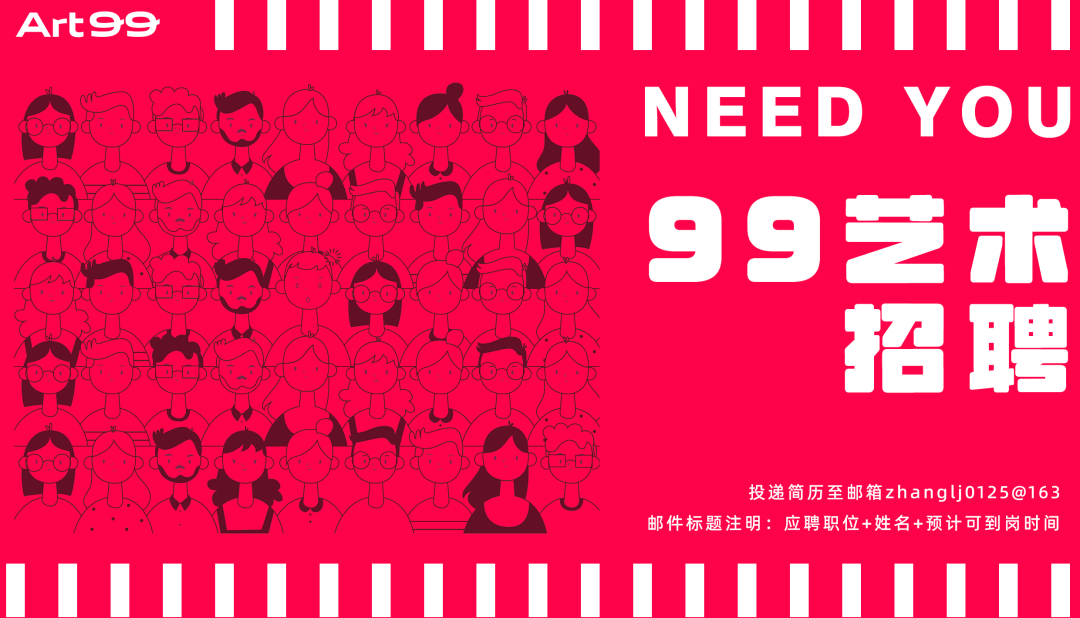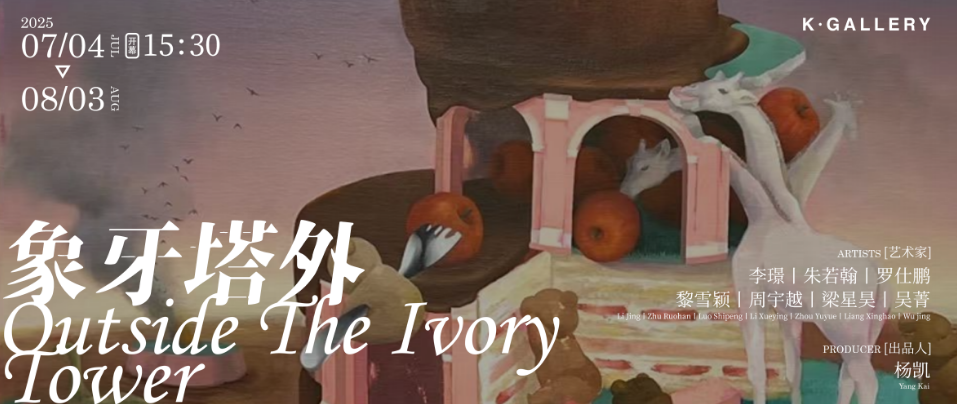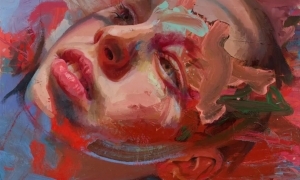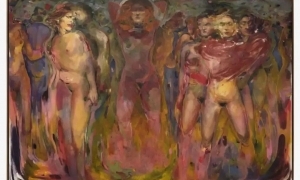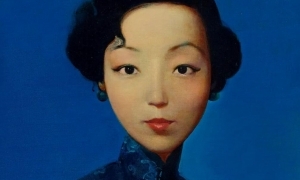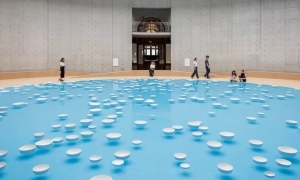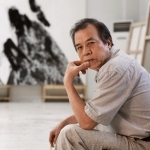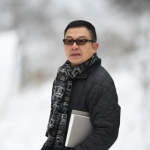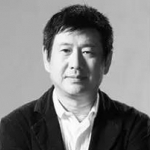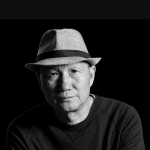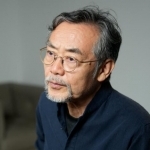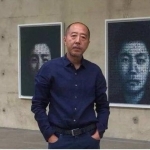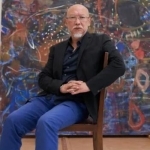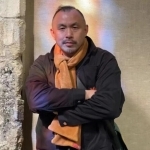“站在屋顶,看着忙碌的人流,只是感到有些悲伤,这是一群没有面孔的人群。”[①]马晗的这段话,是他在阐述作品“蚂蚁的计划”时写下的,这是他对今天像北京这样的特大型城市人流和街景的印象。他1994年大学毕业后来到了北京,当时这个首都城市正在发生的巨大变化是中国的其他城市所不能比拟的,那就是商业主义的市场化迅速催生着城市景观的改变:城市的规模从那时起至今十五年间从三环路扩展到五环路外,城市的高楼大幅度地增加以致于城市的水平轮廓线是由水泥森林构成,更为重要的是城市的建设生产、商业开发和消费再生产的巨大需要犹如一个巨大的旋涡,吸引了来自全国各地以及世界许多国家的谋生者、淘金者和投资者。走过了1980年代的都市人,在1990年代以后变得更加务实,商品交换意识成为了决定生产、流通和消费的不二法门,而物质化的繁荣所带来的文化领域人们精神压力在形成表达方式的多样化的同时,却令人莫衷一是。
一种无形的困惑包围着马晗,他希望用自己的艺术来表达自己身处这种都市化进程的感触,但是,究竟采取何种材料和方式来从视觉上表现这种物质上和精神上的深刻变化呢?马晗是中国美术学院(当时叫浙江美术学院)油画系毕业生,按理说选择油画来表现自己身边的这种翻天覆地的变化是手到擒来、顺理成章的事,但是,这些年来,他几乎很少画画。这究竟是为什么呢?让我们看看他大学毕业时写的自我鉴定,我们会发现他后来的选择的真正原因:“前两年做了一些风格不断尝试的练习,后两年逐步隐退到内心生活里。在心灵的不断独白中,我意识到在油画技法训练中一切蒙蔽眼睛的东西,正如丹纳所言是不应该受到过高重视的。因此便把侧重点转移到对艺术后面观念理念的探讨。当我埋头钻进书堆中时,自己就不会再有一刻的安宁了。我觉得自己什么都没有。……可以说书本拯救了我,当我彷徨、犹豫甚至怀疑自己的能力的时候,书本像是一位姗姗来迟的客人,帮助我找到了自我潜在的一种无比的力量。……大学的最后一年中,我开始设计自己未来的蓝图,……致使自己总是被处在一种思想紧绷、头脑过热的状态中。当然,我宁可做一个头脑过热的人,也不做那种精神麻木退缩的人。”[②]像今天中国其他优秀的当代艺术家一样,在大学即将毕业的时候,马晗认真地总结和反思了自己所受到的油画教育,明确意识到油画作为视觉艺术的一种媒介,并非是通过寻找自己的风格和样式来确立艺术语言,来证明艺术世界存在的价值,风格和样式并不是艺术语言本身,它们只是语言的外在形式。在他就学的1990年代早期以前,怀斯风、古典风、弗洛伊德风和表现主义风,盛行于中国艺坛,然而这些都是油画艺术的风格样式,在马晗看来这些并未触及到艺术语言本身。那么,他所说的艺术语言是什么呢?他认为艺术语言是“一个艺术家感觉的物化”,“感觉是第一重要的,它对媒介的直接选择便是语言。”[③]这就是说,艺术语言的存在和丰富首先取决于艺术家对周围世界的感觉。这个“感觉”在马晗这里指的是什么?指的是“记忆经验和直觉感受”[④],既包括间接经验的教育和信息传播,也包括直接经验的在场和判断。其次,艺术语言的存在和丰富依赖于将这种感觉物化出来的媒介。油画当然是一种媒介,但油画在表达艺术家的当下感觉方面,在很多情况下往往力不从心,难以胜任,更何况许多油画家本末倒置,以追求风格样式为本,因而在日益变化的现实面前难以承载人们的感觉,显得贫乏无力。因此,媒介作为一种物化手段,应当遵从于艺术家的感觉,而后者即感觉必须面对并且生发自当下的现实。“不表达当代人的审美价值取向的风格是不可能具有当代艺术语言的。现代语言使现代人找到对内心世界的直接表达途径,成为一种自我实现的手段。”[⑤]
带着这样的思考和信念,马晗在来到北京不久就进入到北京大学外国哲学研究所,旁听了一年的西方当代哲学课程。也正是因为这种艺术界少有的比较系统的哲学学习,使得他的艺术观念发生了根本性的变化,他需要让自己的艺术直接尊重自己的直觉,而自己的直觉则要直接面对当代生活,而个人的风格样式这种表现欲的外化形式,就显得无足轻重了。从这个时候开始在马晗的眼里,油画只是一个媒介,它和照相机、摄象机、现成品材料和装置一样,必须服务于他内心想要表达的东西。这十几年来,他以摄影、行为、装置、综合材料等多种媒介形式,来表达他的记忆经验和直觉感受,在材料和方式上,彻底走出了当年美术学院建立在油画味、油画感基础上风格样式的羁绊,使自己的艺术创作在语言上获得了丰富的物化形式。
对于从艺术观念入手,使自己的艺术创作不断遵从于内心直觉的马晗来说,他很早就清醒地认识到“在何种基础上,艺术才是真正对当代生活能说得上话的艺术,而不仅仅是博物馆、教科书中的艺术; 使用何种方式,何种媒介去表达已充满着更多的可能性。 那么,什么是值得去表达的?”[⑥]这种对艺术表达对象或者说主题的追问,从另一个角度说明,他从大学后期开始的对艺术风格样式的清理,对艺术表达媒介的拓展,对艺术观念内在本质的思考,对记忆经验和直觉感受的遵从,其实是因为他对他长期生活的这个中心城市以及整个中国城市化发展的强烈关注。正是这种他戏称为“思想紧绷”、“头脑过热”的深切关注和苦苦思索,使得他这些年来的创作始终在主题和对象切入点上,与高速发展的社会经济在思想文化上对当代人造成的精神影响密切相关,而绝非不着边际的形而上学玄想或象牙塔中的书本知识。
对于马晗而言,在一个图像信息膨胀泛滥的时代,知识的聚爆意味着人们精神生活的丰富,还是更为贫乏?记忆和经验是否因为图像的繁衍而变得飘忽不定和更加模糊难辨?水泥森林的茂盛与无休止的扩张,是否早已荡涤了思想的空间和诗意的存在,只剩下无止境的利益角逐和无目的的终日奔波?在这样钢筋铁骨的桎梏中,满街拥堵又不断下沉的是人们的躯体,而人们的灵魂呢?却犹如浮萍一般,悬浮但没有根茎。马晗爱看书,可他偏偏在2001年到2002年做了行为摄影作品《来自北方的风》、《是风》和《移动的书架》,将书籍抛洒和扔弃,其用意在于讽刺人们对知识的表面化理解,将其与致富联系起来,却忘了其原本陶冶情操的精神作用。这次展览中,他再一次为我们垒起了书籍的高楼穹宇,让盘旋飞舞的书籍更加反衬出知识被误解和误用时的荒诞。他早为人知的摄影作品《城市地图》和《蚂蚁计划》,采用连续叠加和循环延伸的方法,向我们夸张地揭示出都市人疲于奔命的工蚁状态,为我们制作出一张令人迷失方向、永远找不到家的地图。他在不少国内外展览中都实施过主题叫《迷宫》的计划,取意于古代流杯亭的迂回环绕空间装置,让人有迷茫不知所措的强烈震撼。为了在视觉上强化他对今天都市人流拥堵不息却毫无自我的感受,这些年来他创造性大量使用指尖大小的小人造型和实物米粒,让数以千计万计的小人和米粒纠缠、攀趴、弥漫和栖居于各种历史名胜和文化图像之上,从而形成了他并非刻意追求的“马氏符号”。他的《今日山水》系列,和这次展出的《梅、兰、竹、菊》,即是他借用古代绘画名作来讽喻传统文化与当代社会变迁发生剧烈碰撞后的感慨。在他用铁丝转义“铁线描”,在平面上纵横遒劲的时候,这些小人和米粒在重组和转换古代经典图像原有的造型语言样式的同时,却依然透露着一种深深的感伤和优雅,只不过它更多的是出于当下的处境。
由此可见,马晗的创作无论在对象还是主题上,都直接针对着当代都市物质化和商业化的社会生活。但是,与最近二十年占据主要位置的写实风格的现实主义再现叙事模式不同的是,他几乎没有用手中的各种媒介去摹仿和描绘现实生活的场景和人物,因为这种满足视网膜的表面视觉经验,难以深入到现实生活喧闹的场景和蜂拥的人群背后,无法传达出具体物象背后那种缠绕难分、挥之不去的心理感受。这是一种不断承诺回报却又不断吞噬和麻痹感受力的感受,这是一个永不停止的赌盘,没有人会为你此前的付出和牺牲买单,除非你不断地玩下去。这是一种此前从未有过的刺激和迷眩,它犹如梦魇一般,让所有接触到的人在劫难逃。马晗倾其心力所要传达或者说物化出来的正是这种感觉。
当2008年的金融风暴造成的全球经济危机弥漫在世界各个角落的时候,马晗更将自己的视点投射到人类资源和财富在控制和分配上的社会公平与正义的伦理道德原则上。他在北京的早期曾经边学习哲学,边打过工(发挥专长搞平面设计),做过公司白领,有过朝九晚五的工作经历,体会过“知识改变命运”,“知识就是财富”的优越。短短的十年时间之后,白领令人艳羡的职业和收入,早已被一个坊间称为“黑领”的充满神秘色彩的社会群体淹没了。相对于靠知识和技能打拼天下、赢得财富的白领而言,庞大的黑领阶层更多的是凭借对重要资源的垄断而轻松地获取丰厚的利润,他们的真正收入是隐蔽的,他们就其个人能力而言无须具有过强的竞争力,但是他们就其群体而言却控制并且分得了大部分原本应该属于全体公民的财富。他们所到之处,成为商家竞相追逐的对象,因为他们远比白领具有更加强悍的消费能力;他们的出现,进一步扩大了同一社会中人与人之间的贫富差距。马晗和不少清醒的知识分子一样,感觉到了最近这个隐蔽的群体对公共资源和财富的控制和渗透,这是对公民社会建设进程中资源和分配上平等和正义原则的严重侵害,这种无形的垄断所带来的危害远要比商品的物化更加造成人们心灵的异化。现在,他要用自己的艺术来表达他对这种新的异化的关注,正像他在2002年《漂浮》中用行为摄影的形式揭示都市白领漂泊、挣扎却不知方向的状态那样。这一次,像他以往许多次一样,他没有直接用视觉图像去再现和复原这些原本就无处不在却又难以指证的群体,而是选择用米浆浸染过的数以千百计的黑衬衫,让它们从光影交织的黑室中飞出,犹如蝙蝠或者乌鸦,在展厅巨大的空间里上下翻飞。它们时而似蝗虫,所到之处树木枯萎;时而似乌云,高高地盘旋在展厅的顶部;时而似飞蛾,义无返顾地扑向通过开敞大门进入展厅的观众;时而又似僵尸一般,被挤压定格在玻璃框中。这是一种巧妙的隐喻手法,黑衬衫的领子当然是黑色的,但它们并没有裹覆着黑领们的肉身躯体,也不需要描绘和交代出黑领们具体的人物形象特征,可观众依然可以从这一群群、一片片没有限制、无所约束、放纵随意的黑衣两袖伸展悬挂的造型,感受到一种从未有过的难以言状的冷漠和压力。
借助着人的服装而不是人本身,马晗再一次让自己的艺术“真正对当代生活能说得上话”了,因为他以自己的亲身经历和长期的观察思考,洞悉到在当下的今天,“什么是值得去表达的”,而这种表达又应该以何种方式呈现出来。黑衬衫,作为现成品,原本毫无生命可言,但是经过艺术家的选择和处理,却成为了承载某类人群身份信息的标识。当它们成群成堆出现在展厅的时候,便转化成为一种独特的视觉艺术语言,它们无所顾及又无所不在,让观众在心理上感受到一种无处藏身的压迫,激发起观众的想象力。
马晗的艺术的主题是全球资本化背景下人的生存状态,他的艺术特点在于从来都是从周围的环境空间入手来烘托人、表现人。这个“人”不是具体的单个人,而是有着社会属性的某种群体,他们都没有面孔,这是被我们所处的生存环境的压力模糊和淹没的,但是他们又都具有顽强的生命力,他们既是特定社会空间中的活物,同时又在改变和再造着自己生存的这个空间,从而形成了一种种、一类类异样的视觉风景。《林中路》这件大型作品,便展现了一条被爬满小人的树木相拥掩隐的道路。这数不清的被欲望和压力驱使的小人,不断地攀爬和挣扎,置换了原来枝繁叶茂的自然之树,形成了一棵棵欲望和痛苦交织而成的今日景观之树,它们早已没有了海德格尔那种在思想的林中路中穿行、思索和追问的精神性,有的只是人如蚁蛹的欲望和苦楚。[⑦]艺术家对这种荒诞怪异的景观之树的展示本身,正是试图祛除遮蔽在这些浩如蚁蛹的芸芸众生心头的梦魇,让他们回归其自我的个性意识,还自然之树以其本来面目。
通观马晗这十几年来的艺术创作,他在注重现实世界巨大变化的同时,能够删拔大要,将现实生活中最具有隐喻性和象征性的材料选择并抽取出来,加以艺术观念上的转换和处理,从而形成了自己充满直觉且具有感召力的视觉艺术语言。在这个物质化、交换化和权力化的时代,艺术家能够做到的就是用视觉的方式让人们意识到自己无处藏身的处境,而如果这种视觉方式起到了这样的作用,那么,这个艺术家的工作就具有了领升人的意识的诗的意义。
高 岭
2009年8月29日-9月1日
[①]马晗《平滑的描述》,未发表。
[②] 马晗《自我鉴定》手稿,1994年6月17日作,未发表。
[③] 马晗毕业论文《沉默的声音》手稿,1994年5-6月作,未发表。
[④] 同注1。
[⑤] 同注3。
[⑥] 同注1。
[⑦] “林中路”是海德格尔一部著作的书名,美茵法兰克福1950年版,共345页。转引自《海德格尔选集》(下),孙周兴选编,上海三联书店1996年版,第1328页。
Permeating: A Visual Experience With No Place to Hide
----On Ma Han’s Art
“Standing on the roof of a building and watching people hustling and bustling in the street, I feel somewhat sad. They are a group of faceless people.”[①] Ma Han wrote down this statement when he explained his work “The Ant’s Plan”. This is his impression of people and street scenes in a metropolis like Beijing. After graduation from college in 1994, he came to Beijing, the capital city of China where the ongoing tremendous changes were not seen in other Chinese cities. The market-oriented commercialism was rapidly changing the cityscape: Over the past fifteen years the city has expanded from the 3rd ring road to the 5th ring road, and tall buildings have appeared so quickly like mushrooms that the city’s skyline is just a thick forest of cemented buildings. And more importantly, the enormous demand for urban construction, commercial development and consuming reproduction, like a giant whirlpool, attracts gold rushers, bread earners and financial investors from different parts of the country as well as of the world. Experiencing the vicissitudes of the 1980s, city-dwellers in the 1990s now became more pragmatic and realistic. The awareness of trading for commodities became the one and only way to determine production, circulation and consumption. Despite materialistic prosperity, people began to feel more spiritual pressures of different forms, not knowing what to do to alleviate these pressures.
An intangible puzzlement engulfed Ma Han. He hoped to express his feelings about urbanization by means of art. Yet, in what way and with what materials should he express such profoundly materialistic and spiritual changes? Ma Han was a student of oil paintings who had just graduated from China Academy of Art (then known as Zhejiang Academy of Art). Normally, choosing oil paintings as a way to express such tremendous changes should be as easy as a piece of cake to him. Yet, he seldom drew paintings these years. Why was it so? Let us take a look at his self-appraisal when he jotted down at the time of graduation, and we will find the real reason for his choice later: “In the first two years of my college I did some practice trying different styles, and in the latter two years, I gradually receded to my inner heart. In my own monologues, I came to realize that all things invisible to the eyes in the techniques of oil paintings, as Taine said, should not be highly regarded. So I shifted my focus to exploring the ideas behind art. When I buried myself in books, I found no peace, no peace of a moment in myself. I felt I had nothing……It could be said that books had saved me. When I wavered, hesitated and doubted my own capabilities, a book was like a late-coming visitor helping me find a potential power in me…… In the last year of my college life, I began to design my blueprint in the future…… It made me always in a tight-minded and hot-headed state. Sure, I would rather be a hot-headed person than a dumb-minded person.”[②] Like other contemporary artists in today’s China, Ma Han was earnest to summarize and reflect upon his education just before he was to leave college. He has realized clearly that as a medium of visual art, oil paintings should not intend to establish the art language through his own styles or forms. Styles and forms are not the art language in themselves; they are merely the external forms of the art language. In the early 1990s, while he was at college, different styles of art such as the Wyeth style, the classical style, the Freudian style and the Expressionist style were popular in China. Yet, all these were styles of oil paintings. In Ma Han’s view, these did not touch art language itself. Then, what is art language he thinks? According to him, art language is “the materialization of an artist’s feeling”, and “feeling is of primary importance, and its direct choice of medium is language.”[③] In other words, the existence and abundance of art language, first of all, depends on an artist’s feeling about the surrounding world. What does this kind of “feeling” mean to Ma Han? It means “memorable experience and instinctive feeling”[④], which includes both the education and information dissemination of indirect experience and the presence and judgment of direct experience. And also, the existence and abundance of art language relies on the medium which materializes this feeling. Oil paintings certainly are a kind of medium. Yet, in many cases, oil paintings cannot fully express an artist’s current feelings. And besides, many artists of oil paintings persistently hanker after the style, so they are not capable enough to convey people’s feelings when they face the ever changing reality. Therefore, as a materialized instrument, the medium must follow the artist’s feelings and the latter (the feelings) must face the current reality. “A style which does not show contemporary people’s aesthetic values is incapable of representing the contemporary art language. Modern language makes it possible for modern man to find a direct approach to expressing the inner heart, and thus becoming a way of self-fulfillment.”[⑤]
With such a thought and belief, Ma Han came to Beijing, and soon later, entered into Foreign Philosophy Research Institute of Beijing University to attend the course Contemporary Western Philosophy as an auditor for a year. Thanks to such a systematic study of philosophy, which is rarely done by many other artists, his conception of art changes substantially. He needs to directly respect his own instinct in his art, and his instinct needs to directly confront the contemporary life. An artist’s style, as an external form of expression, seems to be unimportant. Starting from this moment, in Ma Han’s eyes, an oil painting is but a medium, and like cameras, video-cameras, ready-made materials and devices, it must be subjected to what he wants to express in the heart. Over the past ten or so years, he has been using different media forms, such as photography, behavior, devices and complex materials, to express his memorable experience and instinctive feeling. In terms of materials and methods, he has completely broken away from the fetters of the academic style of oil paintings, bringing abundant physical forms of language to his artistic creation.
Starting with the conception of art and always following his own instinct, Ma Han began to think long ago such questions: “On what basis can an art be called a real art that speaks for our contemporary life rather than an art merely found in museums and textbooks? In what way and with what media do we express the many more possibilities? And what is worth our efforts to express?”[⑥] Such a questioning of artistic targets or subject matters, from another perspective, shows that his redifinition of art style, his expansion of art medium, his thought on the innate quality of art and his loyalty to memorable experience and instinctive feeling are in effect the result of his strong concern for the development of this capital city and other chinese cities. It is this kind of deep concern and hard thought, which he himself describes as “tight-minded” and “hot-headed”, that makes his artistic creation in recent years always closely associated with the influence of rapidly developing economy and society on contemporary people’s ideas, rather than merely aimless metaphysical thought or book knowledge in the ivory tower.
For Ma Han, in an age when visual information runs rampant, does the explosion of knowledge mean that people’s spiritual life becomes richer or poorer? With the change of pictures, do memories and experiences become more uncertain and more difficult to discern? With the thick forest of cemented buildings and the endless urban sprawl, have we long lost the space for thought and poetry, nothing left but the ceaseless pursuit for profits and the aimless hustle and bustle for a living? If what we see in crowded streets and cemented buildings is the fall of our body, then where is our soul? It is suspending, just like the duckweed, rootless. Ma Han is fond of reading books, yet in 2001 and 2002, he discarded books by producing a few works of behavioral photography: Wind from the North, It’s Wind and The Moving Bookshelf, for the purpose of satirizing people’s superficial understanding of knowledge. People tend to associate knowledge with wealth, forgetting its spiritual role of cultivating mind. In this exhibition, he once again built up the high edifice of books, exposing the absurdity of knowledge being misused and misinterpreted. In his well-known photographic works City Map and The Ants’ Plan, he uses the methods of continual overlapping and cyclic extension to exaggeratedly reveal urban people’s busy state like the worker ants, producing a map in which people lose way and cannot find their home. In several exhibitions both in and outside China, he intended to name his subject matter Maze, which was based on the idea of the winding and surrounding space device of the ancient-styled Floating-cup Pavilion, in order to give people a strong shock of not knowing why. To highlight his feeling about the urban people who are simply like selfless ants, Ma Han creatively uses tens of thousands of miniature humans and rice grains, their size as small as fingertips, to let them twine, climb, creep, permeate and inhabit in various kinds of historical sites and cultural images, hence his own style “the Ma’s Symbol”. His series of Mountains and Waters Today, along with Plum, Orchid, Bamboo and Chrysanthemum which is on display this time, are rightly his clever use of ancient famous paintings as an allegory to the sharp impact between traditional culture and contemporary society. While he draws lines with “iron wires” and regroups and transforms these miniature humans and rice grains on the canvas, those ancient classical images are tainted with a deep sense of sadness and elegance, only more significantly in a current situation.
Thus, whether in target objects or subject matters, Ma Han’s art aims directly at the materialistic and commercialized life of present-day cities. However, unlike the realist pattern of narration which has been prevailing in recent twenty years, he refuses to imitate and duplicate the real scenes in which people live, for he thinks this sort of surface or visual experience is hard to gain a deep insight into people’s real life and is unable to convey the complicated inner-heart feelings behind a particular object. It is a constant process of making promises for rewards and yet dumbing the sense of percetion. It is a never-ending gambling game in which nobody will pay for your cost and sacrifice unless you keep playing the game. It is a kind of stimulation and perplexion never felt before, and just like a nightmare, it makes all people who touch it inescapable. What Ma Han wants to convey or materialize in his art with all his heart and soul is rightly this kind of feeling.
When the global economic crisis, which results from the financial storm in 2008, spreads to every corner of the world, Ma Han shifts his focus to the ethical or moral principles concerning the fairness and justice in the control and distribution of mankind’s resources and wealth. In his early years of stay in Beijing, while studying philosophy, he did odd jobs (making graphic design), working as a nine-to-five white-collar employee for a company, and experiencing the advantages that “knowledge changes fate” and that “knowledge is wealth”. After a short span of ten years, the admirable job and income of a white-collar worker has been merged into a mysterious social group which is nicknamed as “black-collar”. While white-collars rely on their knowledge and skills for wealth and success, the vast group of black-collars easily obtains a handsome profit by relying more on the monopolization of major resources, and their real income is intangible. In terms of personal ability, these black-collars are not competitive, yet they as a group have controlled and shared most of the wealth which originally should belong to all the people. Wherever they go, these black-collars are followed by commercialists, for they possess a far more robust capacity of consumption than white-collars; their emergence further broadens the gap of wealth between rich people and poor people of the same society. Like many clear-headed intellectuals, Ma Han feels this hidden group’s control of and penetration into public resources and wealth, which is a serious infringement upon the fair and equal principles of distributing resources and wealth in the process of building a civic society, and this intangible monopolization is far more harmful to people’s soul than the materialization of commodities. Now he wants to use his art to express his concern for this new kind of soul alienation, just as he did in Floating in 2002, using behavioral photography to expose the wandering, struggling and directionless state of white-collar workers in the cities. This time, as he has done many times before, he does not directly use visual pictures to recreate and restore these omnipresent yet unidentifiable groups; instead, he chooses to use hundreds of black shirts, which are dip-dyed with rice gruel, to show them flying out of a dark room, just like bats or ravens, fluttering up and down in the enormous exhibition hall. Some of them, like locusts, make trees wither where they go. Some, like clouds, hover high at the top of the exhibition hall. Some, like moths, dash recklessly at the audience who enter the hall from the wide open door. And some, like dead bodies, are pressed and fixed inside the glass frame. This is a clever use of metaphor. The collars of the black shirts are certainly black, but they do not cover up the black-collar people’s fleshy body, and there is no need to depict or display those black-collar people’s actual physical forms. Yet, from these unrestrained, limitless, casual and high-hanging models of black shirts, the audience can feel an unprecedented coldness and pressure which is hard to describe.
With the aid of apparel rather than human body itself, Ma Han once again makes his art “really speak for contemporary life”. Because of his own personal experience and his long-time observation and reflection, he has come to realize “what is worthwhile to express” in today’s world and in what way it should be expressed. Black shirts, as ready-made materials, are lifeless in themselves, but after the artist’s selection and treatment, they become a symbol for a particular group of people. When they appear in the exhibition hall in groups and piles, they are transformed into a special language of visual art. They are omnipresent and regardless of anything, so they make the audience feel an inescapable oppression and stir up an endless imagination.
Ma Han’s art shows the state of human beings’ survival in the background of global capitalization. His art is characterized by a persistent use of the social surroundings to depict and set off a person. This “person” is not a specific individual person, but a particular group of people with social attributes. They are faceless, for they are dimmed and merged by the pressures of the survival environment, and yet they have a strong force of life. They are the living beings in a particular social space and they are changing and reshaping their own survival space, thus producing different types of unusual scenes. A Path in the Woods (deriving from Heidegger’s philosophical work Holzwege), which is a big-sized work of art, displays a path full of climbing miniature persons in the thick woods. The numerous miniature persons, driven by desires and pressures, are climbing and struggling. They have transformed the natural prosperous trees into merely a line of sight-seeing trees entangled with pains and desires. They have long lost the spirit of Heidegger’s thinking in the woods, only with the pains and desires of human beings who look like ants. [⑦] By presenting these absurd and bizaare trees, the artist attempts to rid these people of their nightmare and let them return to normal state of personality.
A general survey of Ma Han’s artistic creation in the past ten-odd years shows that while focusing on the tremendous changes in the real world, he is able to select and extract the most metaphoric and symbolic materials from the real life and give them an artistic transformation, thus forming his own visual art language which is full of instinct and inspiration. In such an age when everything is materialized, intended for exchange and linked to power, what an artist can do is to use a visual form to make people conscious of their situation in which they have no place to hide. If such a visual form can function, then, an artist’s work is of poetical significance to enhancing people’s awareness.
Gao Ling
29 Aug.- 1 Sept., 2009
[①]Ma Han: A Smooth Description, not published
[②] Ma Han: the manuscript of Self-Appraisal, written on 17 June, 1994, not published
[③] Ma Han: the manuscript of his graduation thesis The Silent Sound, written in May to June, 1994, not published
[④] Ibid 1
[⑤] Ibid 3
[⑥] Ibid 1
[⑦] “Holzwege” is a work by Heidegger, published by Maine-Frankfurt in 1950, totaling 345 pages. Quoted from Selected Works of Heidegger (Part II), edit. by Sun Zhouxing, Shanghai Joint Publishing Company, 1996, P.1328
【编辑:霍春常】


